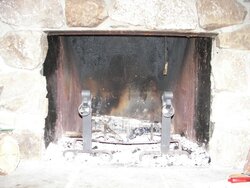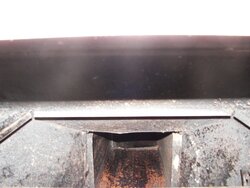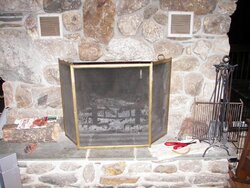I am thinking I would like a wood burining insert for my fireplace. It is a 40 year old cast iron (I think) fireplace surrounded by brick and stone on an exterior wall. I am concerned about getting the pipe up the chimney as the damper opens in the front of the fireplace and while the opening is wide enough it is only about 6 inches deep (at least that's what it looked like the first time I measured it). The outer dimensions of the fireplace are 35" wide by 28.5 inches high. The back of the fireplace is narrower at about 27 inches wide and the back wall slopes towards the front as it goes up so that the back wall is about 17 inches from the front at the top of the fireplace; the bottom of the back wall is 24 inches deep.
Are there inserts that would work with this setup without having to rip out the damper, which I think would require taking out the whole fireplace, which I don't want to do. The fireplace is in a large open room of a combined Living and dining area with a cathedral (two story) ceiling on the upstairs of a raised ranch. The upstairs square footage, including two bedrooms and 1 1/2 baths is about 1600 square feet.
Are there inserts that would work with this setup without having to rip out the damper, which I think would require taking out the whole fireplace, which I don't want to do. The fireplace is in a large open room of a combined Living and dining area with a cathedral (two story) ceiling on the upstairs of a raised ranch. The upstairs square footage, including two bedrooms and 1 1/2 baths is about 1600 square feet.





